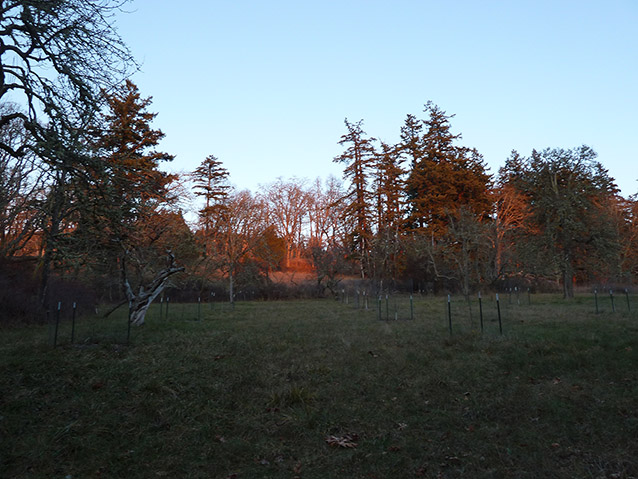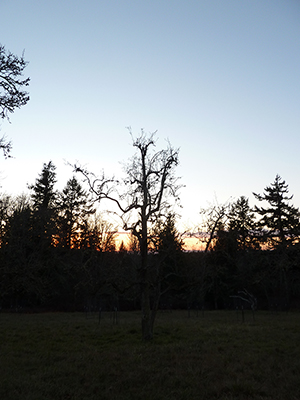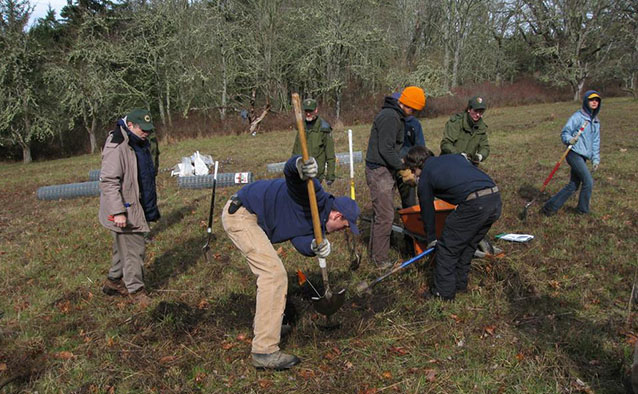The Sandwith Homestead is a 5.2-acre historic site in the northwest of San Juan Island National Historical Park. The site is significant as the location of a late‑nineteenth‑century homestead farm and subsistence orchard, settled and farmed by Isaac Sandwith from 1875 to 1902. Situated on the lower slopes of Young Hill near English Camp, the Sandwith Homestead consists of the core of the original homestead, including the home site and a remnant fruit orchard.
The winters are delightful. We are now having high winds so that it is unpleasant crossing to the city [Victoria] in our little steamer, but next month our pleasant weather begins... Mary Julia Tysen Allen, wife of officer stationed at San Juan Island

NPS

NPS
The original homestead was settled in 1875 by Isaac Sandwith, who had moved to the site with his young family from elsewhere on the island. He built a house using material salvaged from one of the English Camp buildings and constructed several farm structures, including a barn, stable, granary, chicken house, and fences. For the next 27 years, Sandwith farmed the land as part of a 160-acre homestead, raising sheep, cattle, hogs, grain, fruit, and vegetables. He would eventually acquire 640 acres of remote range land for his sheep, which by 1901 numbered more than 900.
The Sandwith Homestead orchard contains 13 contributing cultivated fruit trees and 23 compatible new fruit trees. The contributing trees include varieties of pear, apple, cherry, plum, and apricot. Their layout reveals a grid with 30‑foot spacing, with rows oriented along the contour lines of the hill.
The oldest surviving tree in the orchard, a pear that dates to around 1875, as well as some of the older cherries and an apple, exhibit classic characteristics of a nineteenth‑century orchard. At least three of the fruit varieties, a Ben Davis apple and two pears, one a Flemish Beauty and the other a White Doyenne, are historic varieties that are unusual today.
In March 2009, 23 new fruit trees were added to the orchard as part of a rehabilitation effort, bringing the total number of fruit trees to 36. The new fruit trees were propagated from scionwood taken from the extant Sandwith orchard trees and the Crook orchard trees at English Camp and planted in the original grid layout. While the new fruit trees are considered to be non‑contributing to the historic landscape, they are compatible features within the Sandwith Homestead orchard.
The site also includes a number of stone artifacts and a road trace along the northeast side of the orchard, which was built during the military occupation of San Juan Island and used during the homestead period.

NPS
Quick Facts
- Cultural Landscape Type: Historic Site
- National Register Significance Level: Local
- National Register Significance Criteria: A, C, D
- National Historic Landmark (English Camp)
- Period of Significance: 1875 - 1902
Landscape Links
Last updated: January 10, 2020
